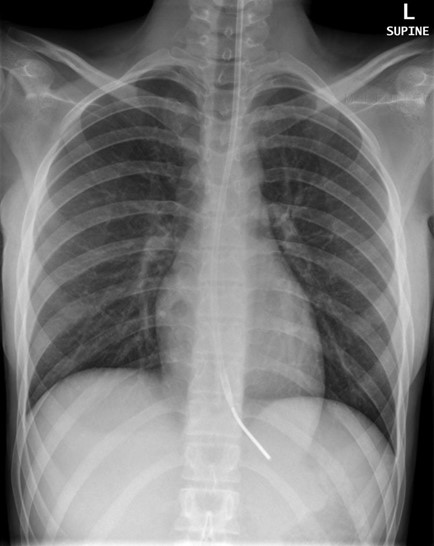When performing pin care, which of the following would be most appropriate? Select all that apply.
Use aseptic technique.
Use an applicator only once.
Gently remove crusts around pin sites.
Clean the site, working toward the pin.
Obtain culture if purulent drainage.
Correct Answer : A,B,D,E
When performing pin care, the nurse should use aseptic technique and obtain a culture if purulent drainage is present. The applicator should be used only once, and the site should be cleaned, working toward the pin. Crusts around the pin site should not be removed as this can cause trauma to the site and increase the risk of infection.
Choice C, Gently remove crusts around pin sites is not appropriate as this can cause trauma to the site and increase the risk of infection.
Nursing Test Bank
Naxlex Comprehensive Predictor Exams
Related Questions
Correct Answer is D
Explanation
Radiographic confirmation. Radiographic confirmation is the most reliable method to verify the placement of nasogastric tubes, and it is considered the gold standard. The nurse should use it to confirm placement initially and periodically to ensure that the tube is in the stomach and not in the lungs or esophagus.

Option A, placing the end of the tube in water and observing for bubbling, is incorrect because it is not a reliable method, and it can cause aspiration or infection.
Option B, using the auscultation technique, is incorrect because it can lead to misinterpretation of bowel sounds, and it is not reliable.
Option C, measuring pH of aspirates, is incorrect because it is not a reliable method, and it can be affected by several factors, including medications, stress, and nutritional status.
Correct Answer is B
Explanation
Anorexia nervosa is a nutritional disorder characterized by a distorted body image and fear of weight gain, leading to an abnormally low body weight. Clients with anorexia nervosa may also engage in binge eating and purging behaviors.
Choice A is incorrect because Kwashiorkor is a type of protein-energy malnutrition caused by a severe protein deficiency.
Choice C is incorrect because Crohn's disease is a chronic inflammatory bowel disease.
Choice D is incorrect because Bulimia nervosa is a nutritional disorder characterized by binge eating and purging behaviors.
Whether you are a student looking to ace your exams or a practicing nurse seeking to enhance your expertise , our nursing education contents will empower you with the confidence and competence to make a difference in the lives of patients and become a respected leader in the healthcare field.
Visit Naxlex, invest in your future and unlock endless possibilities with our unparalleled nursing education contents today
Report Wrong Answer on the Current Question
Do you disagree with the answer? If yes, what is your expected answer? Explain.
Kindly be descriptive with the issue you are facing.
